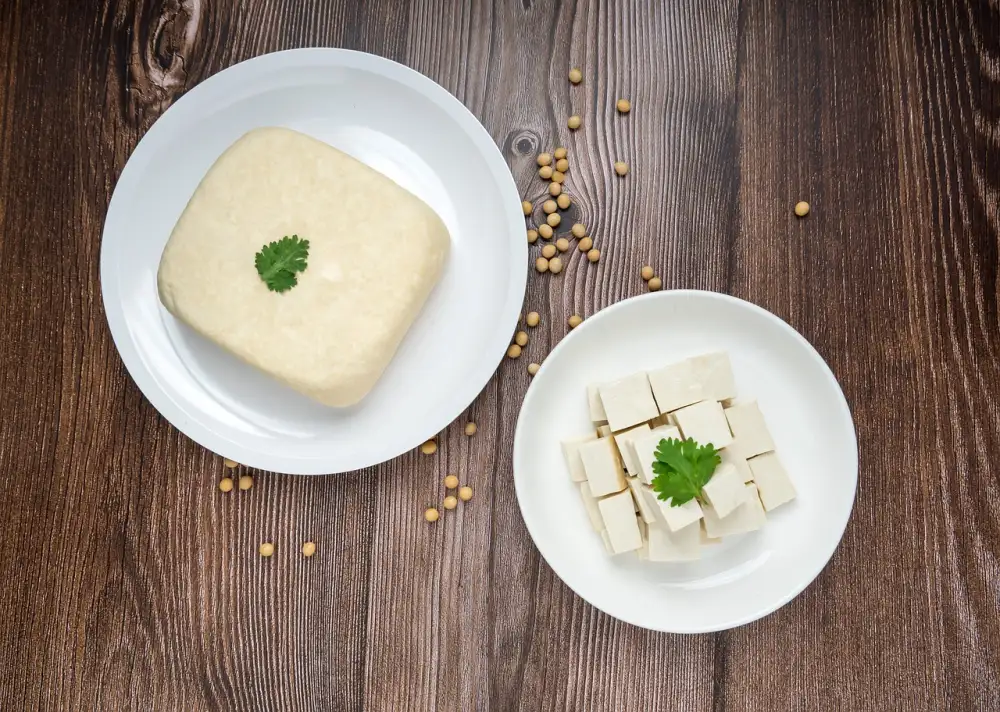Savor the Versatility and Nutritional Benefits of Soya Beans: Unleashing the Power of Soybeans in Your Culinary Creations

Soya beans, also known as soybeans, are a versatile legume that has been cultivated for centuries. Native to East Asia, these small oval-shaped beans have become increasingly popular worldwide due to their numerous health benefits and culinary versatility. With a mild flavor and creamy texture, soya beans can be used in a variety of dishes, making them a staple ingredient in many cuisines. Whether you're a vegetarian looking for plant-based protein or simply seeking new flavors to explore, soya beans are sure to add depth and nutrition to your culinary creations.
Nutritional Value of Soya Beans
Soya beans are packed with essential nutrients, making them a valuable addition to any diet. They are an excellent source of plant-based protein, containing all the essential amino acids needed for growth and repair. Additionally, they are rich in dietary fiber, which aids digestion and helps maintain a healthy weight. Soya beans are also a good source of vitamins and minerals such as iron, calcium, magnesium, and vitamin K. Furthermore, they contain phytochemicals called isoflavones that have been linked to various health benefits. With their impressive nutritional profile, soya beans offer a wholesome and nourishing option for those seeking a balanced diet.
Health Benefits of Soya Beans
Soya beans are not only a versatile ingredient in the kitchen, but they also offer numerous health benefits. These nutrient-rich legumes are an excellent source of plant-based protein, making them a great option for vegetarians and vegans. They contain all the essential amino acids needed for muscle growth and repair. Soya beans are also low in saturated fat and cholesterol, which makes them heart-healthy. Additionally, they are packed with dietary fiber that aids digestion and helps maintain a healthy weight. The high levels of antioxidants found in soya beans can help reduce the risk of chronic diseases such as cancer and cardiovascular disease. Moreover, soya beans contain isoflavones, which have been linked to reducing menopausal symptoms and improving bone health in women. With their impressive array of health benefits, incorporating soya beans into your diet can be a delicious way to boost your overall well-being.
Culinary Uses of Soya Beans
Soya beans are incredibly versatile and can be incorporated into a wide range of culinary creations. They can be cooked in various ways, including boiling, steaming, roasting, or even fermenting. One popular use is to make soya milk, which can be used as a dairy-free alternative in recipes like smoothies, desserts, and sauces.
Soya beans can also be transformed into tofu, a staple in many Asian cuisines. Tofu comes in different textures and can be grilled, stir-fried, or added to soups and stews. Another popular soybean product is tempeh, made by fermenting the beans into a firm cake-like texture. It is often marinated and then grilled or pan-fried for a deliciously nutty flavor.
Soya beans can also be ground into flour to make soya flour, which is commonly used as a gluten-free alternative in baking. It adds moisture and protein to baked goods like bread, cookies, and pancakes. Additionally, soya beans can be processed into oil that is widely used for cooking and frying.
With their mild flavor and ability to absorb other flavors well, soya beans are perfect for adding protein to salads, stir-fries, and grain bowls. They can also be mashed and formed into patties for veggie burgers or blended into creamy dips like hummus.
The culinary possibilities with soya beans are truly endless. Their versatility allows them to seamlessly blend into various dishes while adding nutritional value. So whether you're looking for plant-based alternatives or simply want to explore new flavors in your cooking repertoire, don't hesitate to unleash the power of soya beans in your culinary creations!
Soya Beans in Different Cuisines
Soya beans have found their way into various cuisines around the world, adding a unique flavor and texture to dishes. In Asian cuisine, soya beans are commonly used to make tofu, miso paste, and soy sauce. These ingredients form the foundation of many traditional dishes such as stir-fries, soups, and sushi. In South American cuisine, soya beans are a staple ingredient in dishes like feijoada, a hearty black bean stew. In African cuisine, soya beans are often used to make delicious bean-based stews and sauces. The versatility of soya beans allows them to be incorporated into a wide range of culinary creations across different cultures.
Tips for Cooking with Soya Beans
When cooking with soya beans, there are a few tips to keep in mind. Firstly, it's important to soak the beans overnight before using them. This helps to soften them and reduce cooking time. Additionally, you can add a pinch of baking soda to the soaking water to further enhance their tenderness.
When boiling soya beans, make sure to use plenty of water and simmer them gently until they are tender. Overcooking can result in mushy beans, so be mindful of the cooking time.
Soya beans can also be roasted for a delicious snack or added to salads for extra texture and protein. To roast them, simply toss the drained and dried beans with some olive oil and your choice of seasonings, then spread them out on a baking sheet and bake at 350°F (175°C) for about 20-25 minutes or until crispy.
Lastly, don't be afraid to experiment with different flavors when using soya beans in your recipes. They have a mild taste that easily absorbs other flavors, making them versatile in various dishes. Whether you're adding them to soups, stir-fries, or even desserts like soy milk puddings or soy-based ice creams, the possibilities are endless!
Soya Bean Products in the Market
Soya bean products have gained immense popularity in the market due to their versatility and nutritional benefits. From soya milk to tofu, tempeh, and soya-based meat substitutes, there is a wide range of options available for consumers. These products provide a great alternative for those who follow a plant-based diet or have dietary restrictions. They are not only rich in protein but also contain essential amino acids, vitamins, and minerals. Soya bean products can be easily incorporated into various recipes, adding flavor and texture to dishes. With the increasing demand for plant-based foods, the market for soya bean products continues to grow, offering consumers more choices for healthy and sustainable eating.
Growing and Harvesting Soya Beans
Growing and harvesting soya beans is a fascinating process that requires careful planning and attention to detail. These versatile legumes thrive in warm climates with well-drained soil, making them ideal for cultivation in many regions around the world. The planting season typically begins in the spring, when the soil temperature reaches a minimum of 50°F (10°C). Farmers sow the seeds at a depth of about 1-2 inches, ensuring proper spacing to allow for optimal growth. As the plants mature, they develop clusters of pods containing the valuable soya beans. Harvesting usually takes place in late summer or early fall, when the leaves have turned yellow and about 80% of the pods have reached maturity. Modern agricultural machinery makes this process efficient and less labor-intensive. Once harvested, the soya beans are either dried or processed further to create various products like tofu, soy milk, or tempeh. Growing and harvesting soya beans not only provides a sustainable source of nutrition but also contributes to the economic development of farming communities worldwide.
Sustainability and Environmental Impact of Soya Beans
Soya beans have gained attention not only for their nutritional value but also for their environmental impact. As a nitrogen-fixing crop, soya beans improve soil health by replenishing nitrogen levels naturally. This reduces the need for synthetic fertilizers, decreasing the potential for water pollution and greenhouse gas emissions.
However, the expansion of soya bean production has led to deforestation in some regions, particularly in South America. The demand for soybeans has resulted in the clearing of large areas of land, causing habitat destruction and loss of biodiversity.
To address this issue, sustainable farming practices are being implemented. These include agroforestry systems that combine soybean cultivation with tree planting to restore ecosystems and reduce soil erosion. Additionally, certifications such as the Roundtable on Responsible Soy (RTRS) ensure responsible sourcing and production methods.
Consumers can contribute to sustainability efforts by choosing products made from responsibly sourced soya beans. By supporting companies that prioritize sustainable practices, we can help protect the environment while enjoying the versatility and nutritional benefits of this incredible legume.
In conclusion, it is clear that soya beans are a powerhouse of nutrition and versatility. From their high protein content to their numerous health benefits, these humble legumes have much to offer in the culinary world. Whether you're using them in traditional Asian dishes or exploring new recipes from around the globe, soya beans can add depth and flavor to any meal. So why not unleash the power of soybeans in your culinary creations and savor the versatility and nutritional benefits they bring? Embrace this versatile ingredient and let your culinary adventures begin!
Published: 25. 11. 2023
Category: Food



